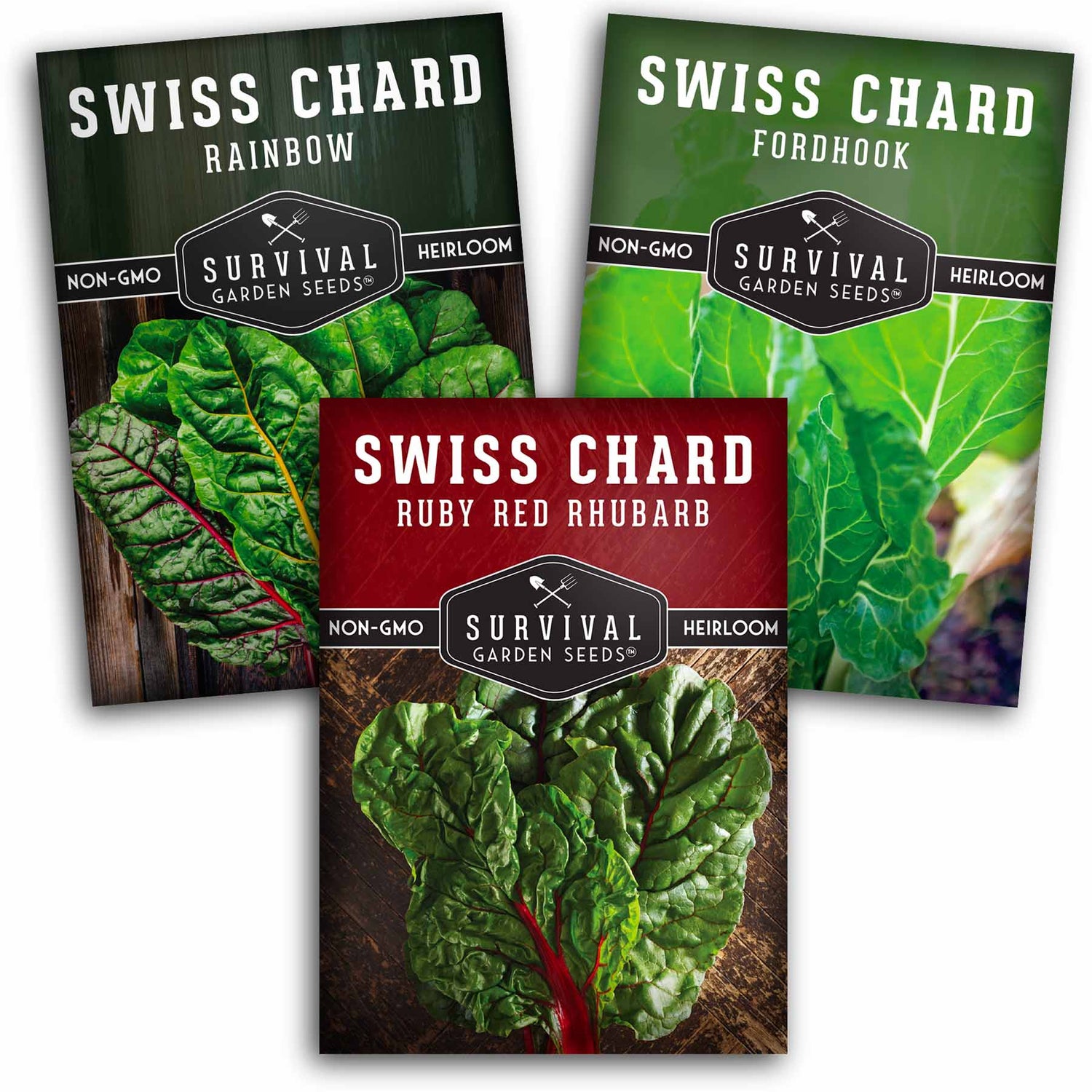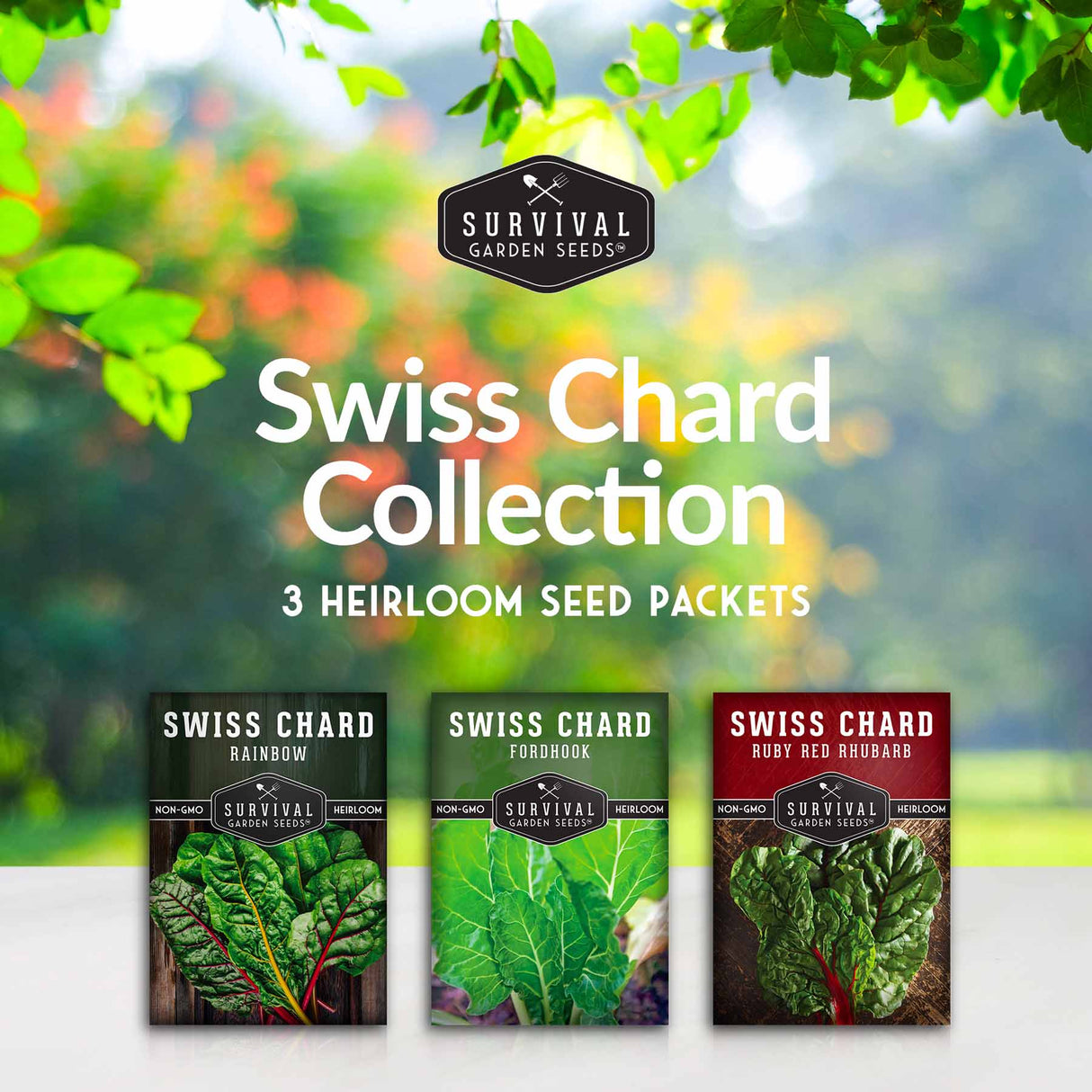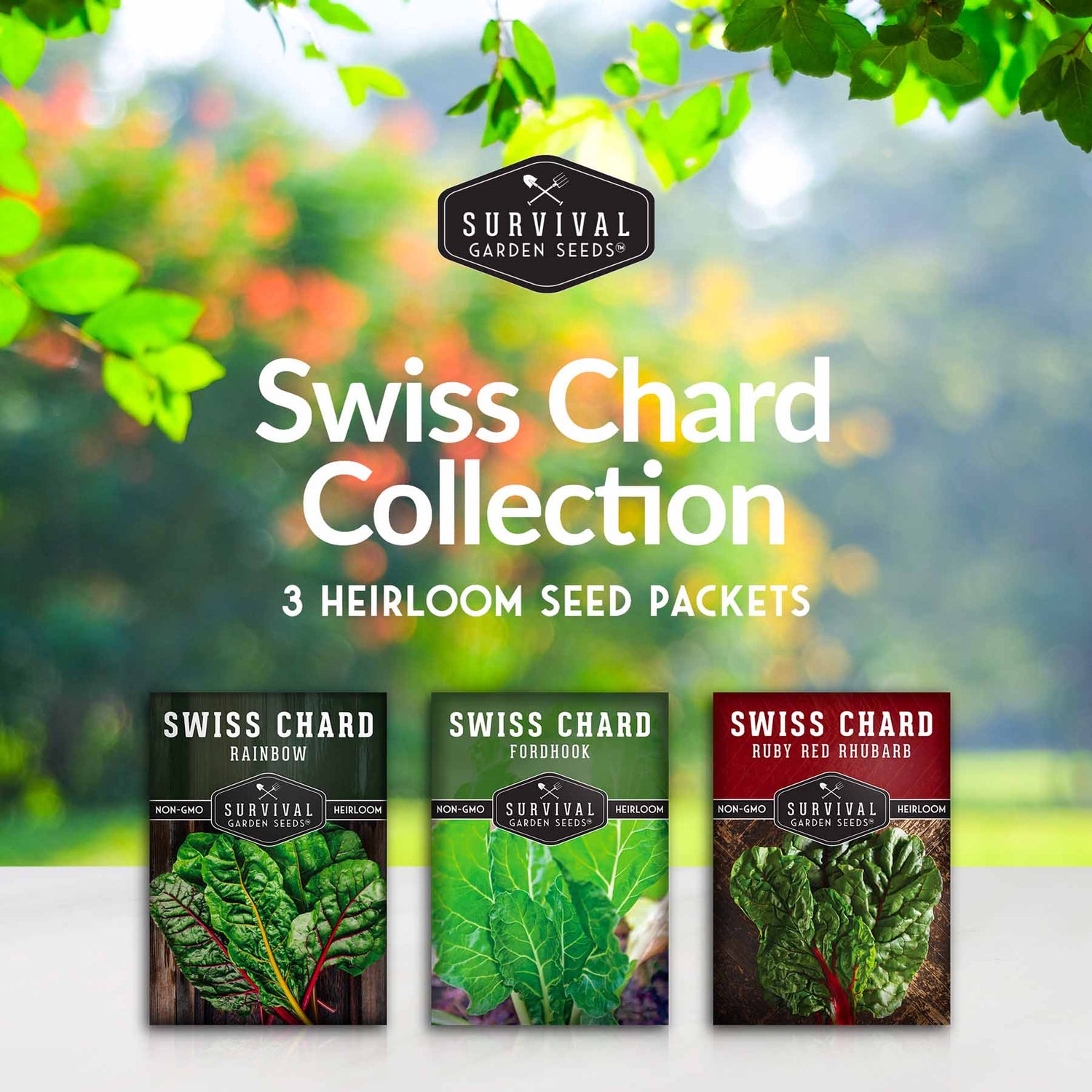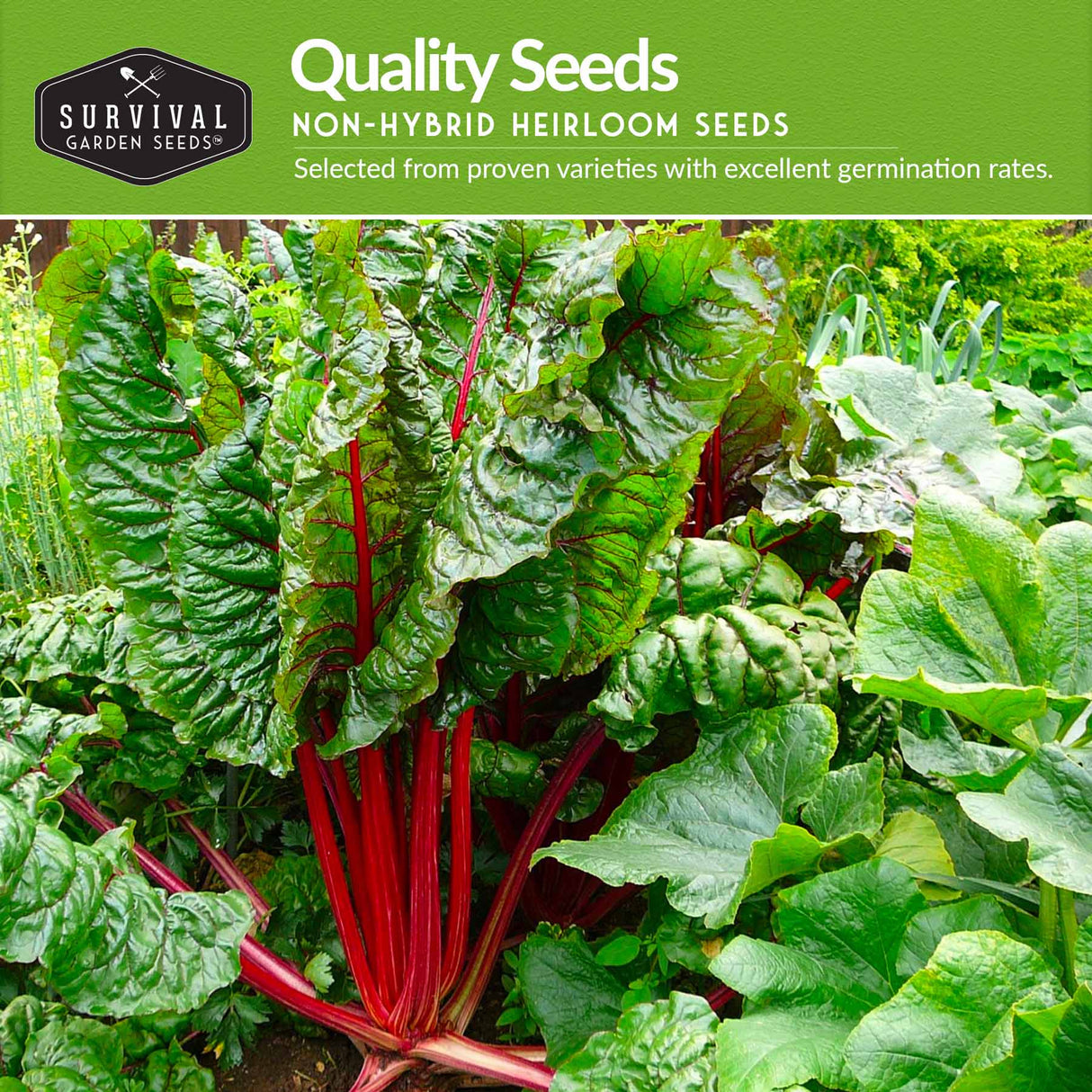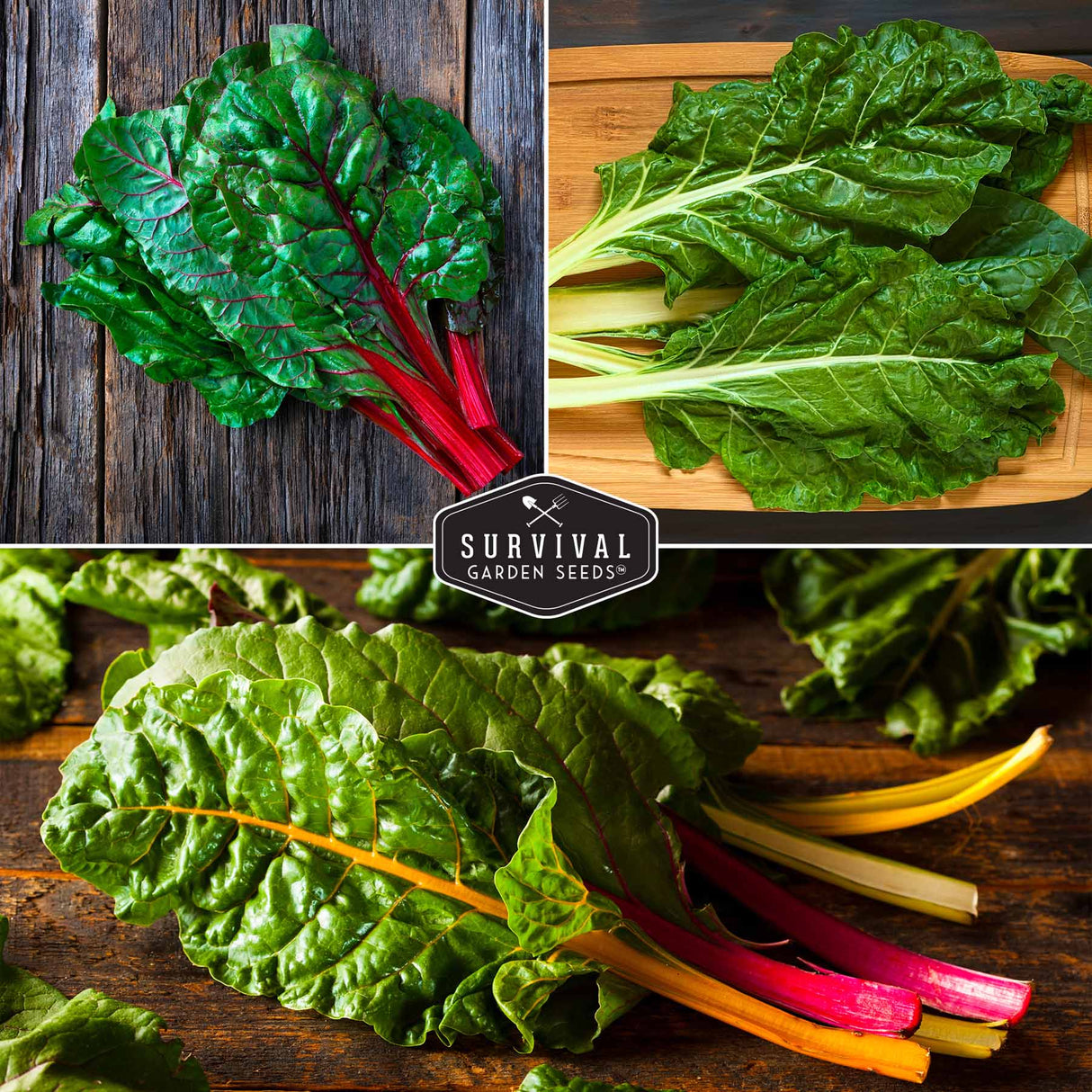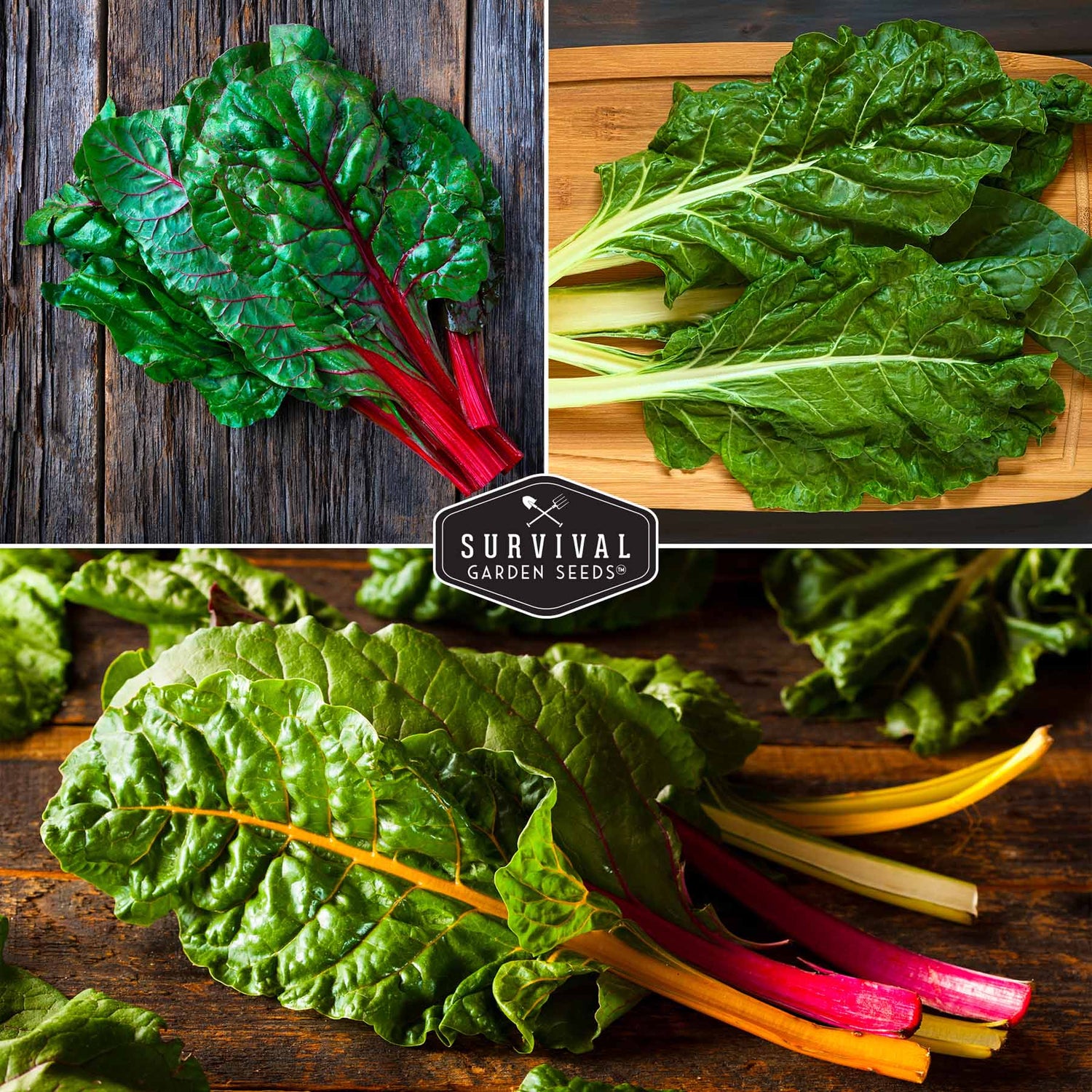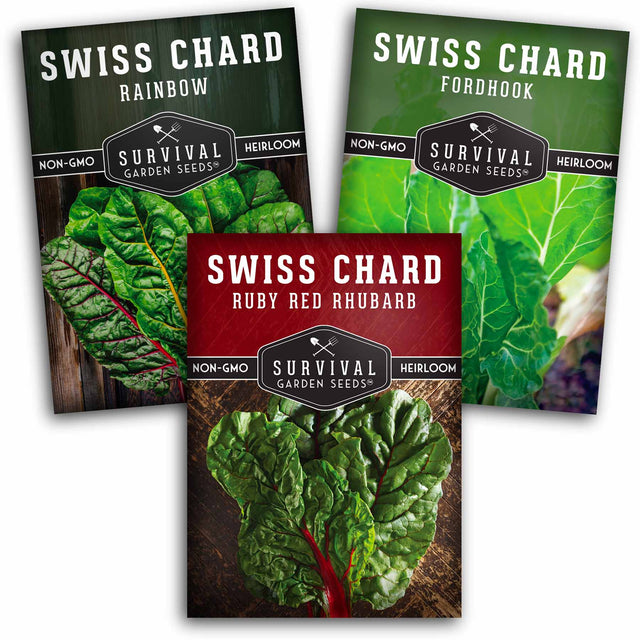Swiss Chard 3 Variety Seed Collection – Rainbow, Ruby Red, and Fordhook Giant Heirloom Greens for Continuous Harvests
Heirloom - Non-GMO - Reliable Germination
Swiss Chard 3 Variety Seed Collection – Rainbow, Ruby Red, and Fordhook Giant Heirloom Greens for Continuous Harvests is backordered and will ship as soon as it is back in stock.
Couldn't load pickup availability
Grow vibrant, nutrient-rich greens with the Swiss Chard 3 Variety Seed Collection from Survival Garden Seeds. This heirloom assortment includes Rainbow, Ruby Red Rhubarb, and Fordhook Giant—three dependable Swiss chard varieties known for their resilience, color, and consistent garden performance. Ideal for raised beds, patio containers, backyard plots, or indoor setups, these leafy greens provide a long season of tender, flavorful harvests.
Swiss chard is one of the most practical crops for home gardeners thanks to its cut-and-come-again growth habit, steady regrowth, and suitability for both cool and warm weather.
What’s Inside: Three Distinct Heirloom Swiss Chard Varieties
- Rainbow Swiss Chard – A colorful mix with stems of red, yellow, pink, and white, adding visual appeal to garden beds and fresh dishes.
- Ruby Red Rhubarb Chard – Deep red stems and rich green leaves with a mild, earthy flavor that works well in salads, sautés, and soups.
- Fordhook Giant Chard – A classic, large-stemmed variety with excellent heat and cold tolerance, producing broad leaves across changing seasons.
Why Customers Love the Swiss Chard 3 Variety Collection
- Offers steady, cut-and-come-again harvests for continuous greens
- Performs well in spring, fall, and mild summer conditions
- Thrives in containers, raised beds, and traditional garden rows
- Non-GMO, open-pollinated heirloom seeds ideal for sustainable gardening
- Suitable for USDA Zones 3–10 for widespread adaptability
- Provides color, versatility, and dependable yields for everyday meals
How to Grow
Direct sow outdoors 2–3 weeks before the last frost or start indoors for transplanting. Cover seeds lightly and keep soil evenly moist. Germination typically occurs in 7–14 days at 50–85°F. Swiss chard grows best in full sun to partial shade with loamy, well-drained soil. Harvest baby leaves early for tender greens or allow plants to mature in 55–65 days for larger bunches. Regular harvesting encourages continued production throughout the season.
Harvest & Use
Pick young leaves for fresh salads, smoothies, or quick sautés. Mature leaves offer excellent flavor for cooked dishes and remain productive even with repeated harvesting. With its reliable regrowth, Swiss chard delivers a steady supply of nutritious greens for family meals all season long.
Survival Garden Seeds Quality
Our non-GMO, open-pollinated seeds are untreated, tested for high germination, and packed in the USA. Each packet includes clear growing instructions to support gardeners of all experience levels. Count on our family-owned brand for dependable seeds that promote healthy, sustainable living year after year.
Heirloom Garden Seeds
All of our seeds are open-pollinated, non-GMO, heirloom varieties with tested germination rates
Payment & Security
Payment methods
Your payment information is processed securely. We do not store credit card details nor have access to your credit card information.

Colorful & Tasty Swiss Chard
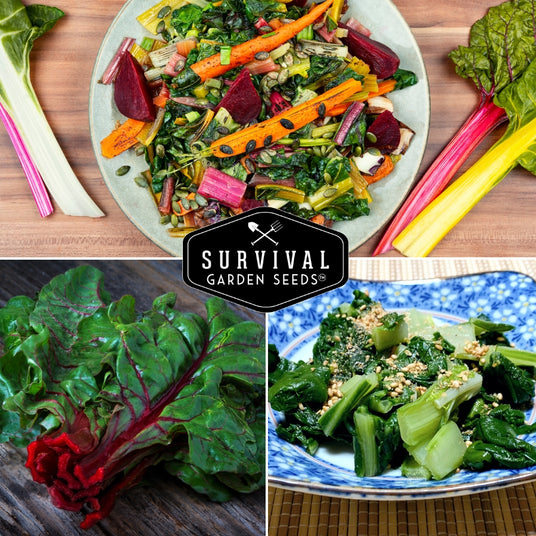
Cool Season Crop
Why Choose Survival Garden Seeds
At Survival Garden Seeds, we believe in preparing today for tomorrow’s peace of mind. That’s why we offer only heirloom, non-GMO, and untreated seeds you can trust to nourish your family and support a sustainable lifestyle. As a family-owned American company, we’re committed to providing seeds that grow strong and true—helping you cultivate health, resilience, and beauty in your garden.
Frequently Asked Questions
Are your seeds heirloom and open-pollinated?
Are your seeds heirloom and open-pollinated?
Yes. All of our seeds are heirloom, open-pollinated varieties, which means they can produce seeds that grow true to type and are suitable for seed saving.
You can learn more about open-pollinated, heirloom, and non-GMO seeds in our Survival Garden Training blog.
Are your seeds non-GMO?
Are your seeds non-GMO?
Yes. All Survival Garden Seeds are 100% non-GMO. Our seeds are open-pollinated heirloom varieties and are never genetically modified.
Are your seeds treated with chemicals?
Are your seeds treated with chemicals?
No. Our seeds are completely untreated and free from chemical coatings, fungicides, or synthetic treatments.
How do I know my seeds are fresh?
How do I know my seeds are fresh?
Every seed packet includes a packed-for date, and we germination-test each seed lot before packaging to ensure high viability.
What is the shelf life of your seeds?
What is the shelf life of your seeds?
Most seeds remain viable for 3 to 5 years or longer when stored properly in a cool, dry place away from light and moisture.
In what USDA hardiness zones can I grow your seeds?
In what USDA hardiness zones can I grow your seeds?
Our varieties are selected to grow successfully across USDA Hardiness Zones 3 through 10. Each packet includes variety-specific planting guidance and germination tips.


